
有许多不同的力可以诱导流体流动,例如动能,压力梯度,浓度梯度等。在天然系统中,一种可以在静止流体中引发流体流动的效果是密度的变化。这种密度的变化将导致流体的浮力发生变化,从而刺激流动量和密度较小的流动,buoyant,流体上升。由于温度差异,您可能最熟悉这些密度的变化。但是流体中不同浓度的溶质的存在也导致密度差异。浮力驱动的流程。研究这种现象的基准模型被称为老年问题,并且它计算出对时间依赖性密度变化的多孔培养基中诱导的流体流量。
Buoyancy Flow, a Benchmark CFD Problem
为了使用模拟探索老年问题,让我们看一下自然存在的盐沉积物如何渗入多孔的水饱和岩石中;改变流体密度;并创建流体流。了解盐水和多孔培养基相互作用的方式将使想要从盐可能导致的问题中保存农作物的农业主义者感兴趣。为了了解如何使用仿真解决老年问题,让我们看一下简化的情况,在这种情况下,我们可以可视化多孔培养基内的流体流动方式(在这种情况下为砂岩)会随着盐浓度升高而变化。
Simulating the Effect of Density-Driven Fluid Flow
First, let’s assume that we want to measure the subsurface fluid flow in a 600 m by 150 m underground porous medium. In our simulation, we’ll set the porosity to 0.1, since sandstone usually has a porosity of around 10%. To simplify the model, we can assume that the formation is completely saturated with placid, pristine fresh water with a density of 1,000 kg/m3。
Now we’ll place salt on the surface of the layer. Since we want to visualize how fluid flow will be created inside the pores, we can introduce high salt concentrations to a small portion of the formation’s surface and see how far the brine will permeate into the stone. We can assume that the brine has a salt concentration of 1 kg/m3。In our simulation, the salt will be exposed to the porous medium at the top right-hand boundary of the model, spanning a distance of 300 m. To simulate this situation, we can create a vertical cross section of the porous medium, measuring 300 m by 150 m with a symmetry boundary at the vertical line atX= 300 and extending as a mirror image to the right. The high salt concentration is located along the top right boundary (y= 150) fromX= 150 toX= 300. The geometry of the model can be seen below:
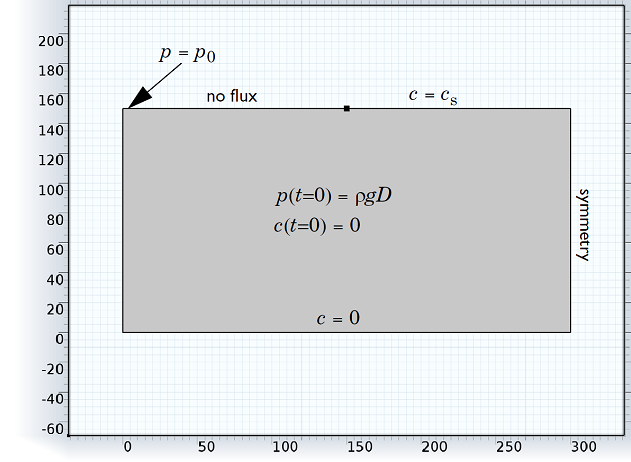
Geometry of the simulation for the Elder problem example of a water-saturated porous medium. A boundary of high salt concentration is located in the top right corner, and a mirror image of the model extends to the right of the boundary marked “symmetry”.
最初,多孔培养基中的原始水是固定的,但是,随着盐从右上角渗入,水密度会变化,并产生流体流动。一年的流程将是什么样的?十点?盐会渗入石头多远?我们可以使用模拟来制定准确的图片,说明浮力驱动的流体流动如何随着时间的推移改变培养基的盐浓度。
Visualizing Salt Concentration and Fluid Flow Changes Over Time
当我们运行20年的模拟时,将获得以下图像中的结果:
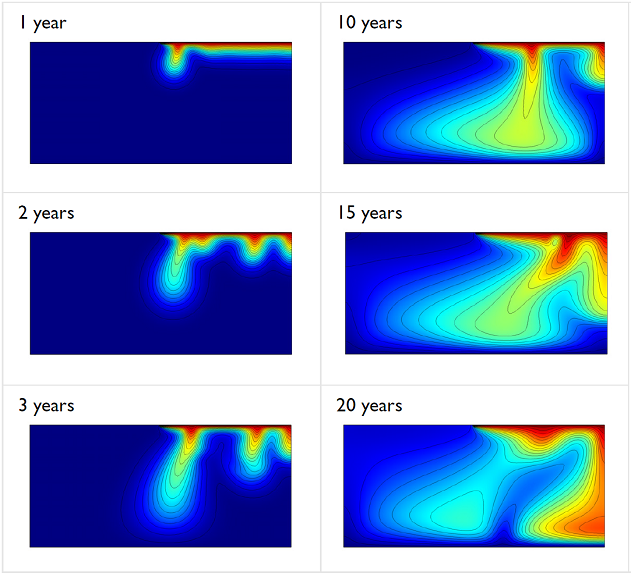
Snapshots of the salt concentrations in the sandstone using the COMSOL Multiphysics solution to the buoyancy-flow benchmark problem.
At the beginning of the simulation, the water inside the porous medium is pristine and stationary. However, as the salt concentration mixes with the fluid, the denser salt water is pulled down by gravity, inciting flow. After around 10 years, the salt has traveled around 150 m in the negative direction, reaching the horizontal boundary aty= 0,覆盖了近60%的多孔培养基。20年后,几乎所有的多孔培养基都在一定程度上暴露于盐浓度。使用相同的模拟,我们还可以可视化流场创建的对流单元,以及它们在20年内的变化。20年后,多孔培养基中的流体流以及由盐水引起的对流电池可以在下图中看到:
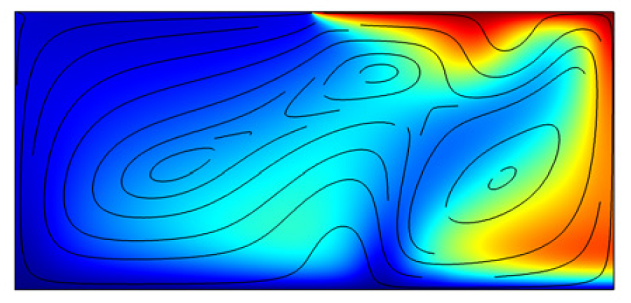
Salt concentrations (surface plot) and velocities (streamlines) from the COMSOL Multiphysics solution after 20 years shows the convection cells caused by the intrusion of salt.



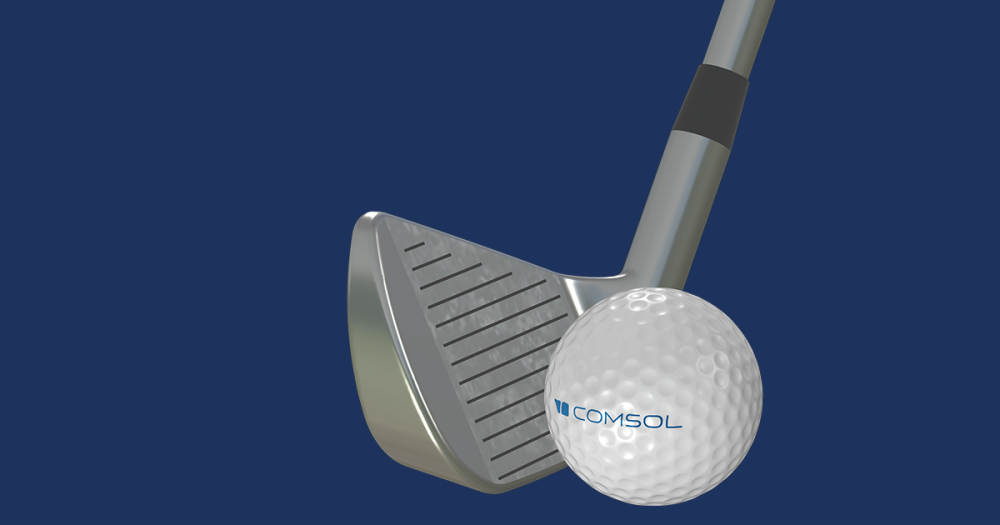
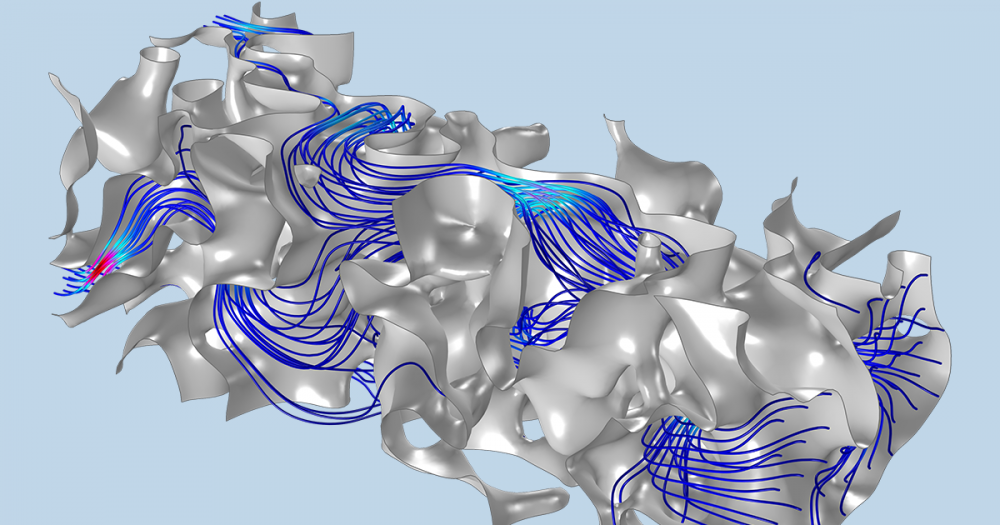
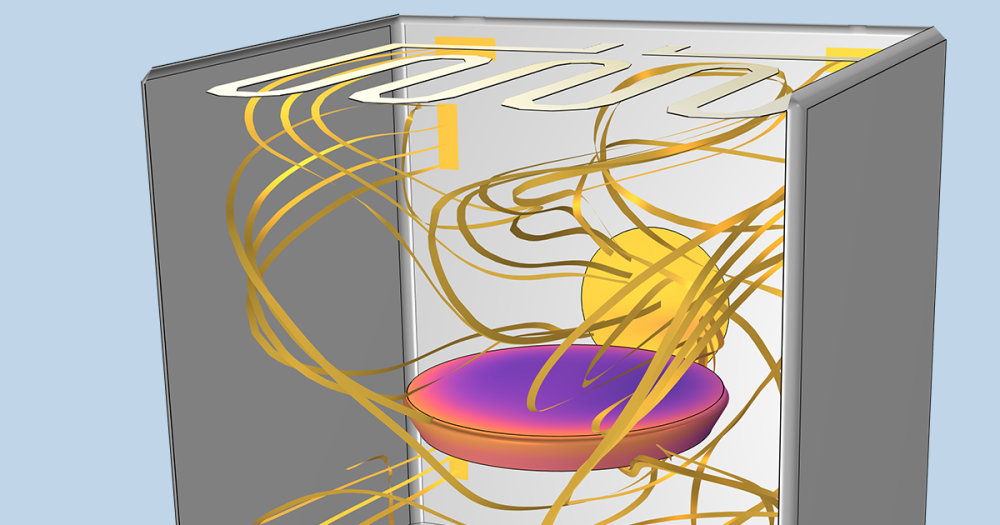
评论(0)